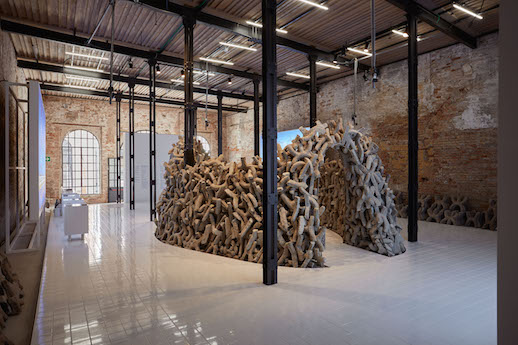Japan at Venice Architecture Biennale 2021
The 17th Venice Architecture Biennale is currently being held after postponement from last year due to the COVID-19 pandemic. With participants from 46 countries, this year’s event on through November 21 explores the theme “How Will We Live Together?” Architects from around the world have gathered in Italy to present projects on topics including the challenges that climate change brings to architecture, the role of public space in urban settings, reconstruction techniques, and new forms of collective building. The Japan Pavilion (Commissioner: The Japan Foundation) is curated this time by Kozo Kadowaki, an architect and professor. Other Japanese architects taking leading roles are Tomohisa Miyauchi, who represents the Singapore Pavilion, and Kenichi Teramoto, a co-curator of the United Arab Emirates (UAE) Pavilion. Their works consider the reuse of old buildings, designs for communal spaces, and alternative construction materials with environmental benefits.
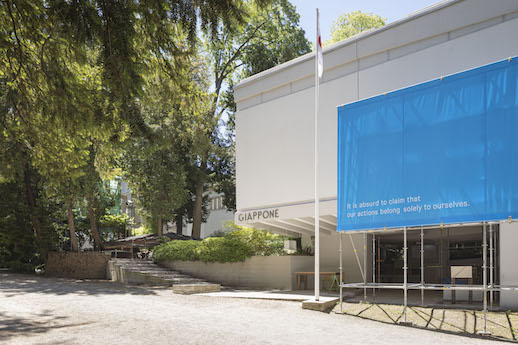
Japan
For the Japan Pavilion exhibition, titled “Co-ownership of Action: Trajectories of Elements,” Kadowaki directed a team of architects and preservation building specialists in dismantling a house and bringing its parts to Venice. Named the “Takamizawa House” after a former occupant, the dwelling was a 65-year-old structure typical of Japanese wood construction. It was located across the street from where Kadowaki lived in Tokyo. Having undergone repeated additions and renovations over three decades, the house physically embodied the changes Japanese society went through during the postwar years. It was one of many such aging residences in Japan, which faces a housing glut due to depopulation. After careful study and deconstruction, its materials were shipped to the Biennale, where they are exhibited along with photographs of the building and a timeline of its history.
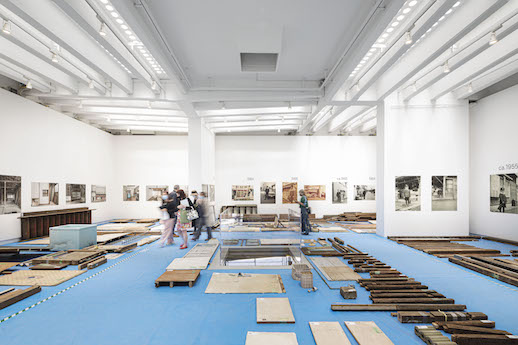
Although not all of the house could be salvaged, parts of it were reconstructed in Venice with new elements added by local artisans. Materials from the house’s roofs and walls have been reused to make benches, screens, and display panels for the pavilion.
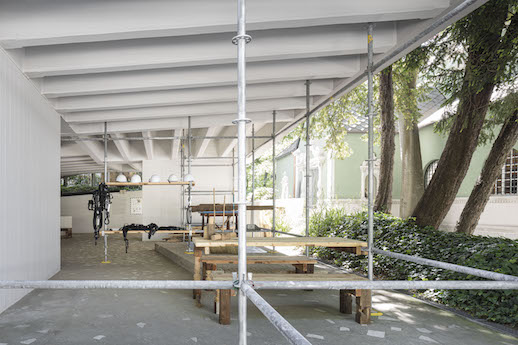
One goal of the project was to visualize how “transport and movement in general have become an increasingly frenetic aspect of contemporary society.” Another was to address issues of waste involved in construction. “Building results in a lot of scrap material, so we wanted to create an exhibition on an architectural scale that did not produce garbage,” explained Kadowaki.
Interconnection also figured prominently in the project. A guide to the exhibition elaborates, “Our actions never belong to ourselves alone. The creations of the architects will be a result of the history through which Takamizawa House lived…they will also be linked to the actions of the artisans and the experiences of visitors.”
While no longer whole, the house has a future. After the Biennale, its parts will be used in a community facility for an apartment complex in the suburbs of Oslo. Takamizawa House’s journey continues.
Singapore
The Singapore Pavilion presents “To Gather: The Architecture of Relationships,” an exhibition examining the ways in which inhabitants of Singapore share space — in the city, with one another, and with nature. Tomohisa Miyauchi, an architect an educator who has taught at the National University of Singapore, is one of five curators of the show. This is his third time curating the country’s pavilion. “This isn’t simply about architecture,” he explains. “It’s about people’s relationships, ideas, histories, cultures, and how they think about the future.”
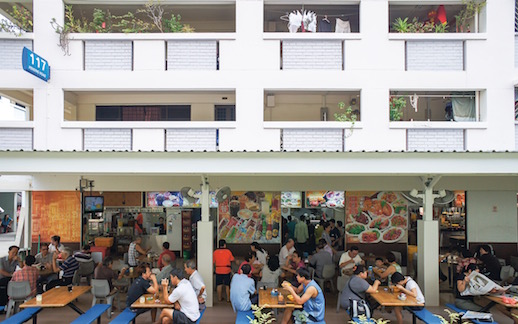
Singapore has experienced rapid urbanization since its independence in 1965. The majority of its urban population lives in public housing, where spaces such as hawker centers – open-air food courts – contribute to community life. In 2020, hawker culture in Singapore was added to the UNESCO list of Intangible Culture and the Heritage of Humanity. In addition to hawker centers, the Singapore project highlights “void decks” as relationship-building spaces. Used for leisure, shelter, and civic functions, these open areas on the ground floors of apartments let different groups in the community convene. Elderly residents can play checkers, delivery bikers can take a break from the rain, and town officials can hold meetings or operate polling stations during elections.
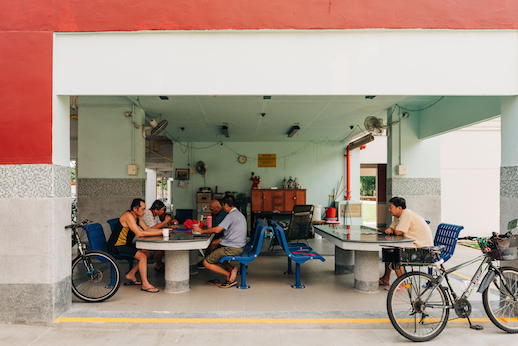
Miyauchi designed Singapore’s exhibition, which features 16 tables with works demonstrating community-oriented spaces in the spirit of hawker centers and void decks. Arranged by the themes “Communing Relationships,” “Framing Relationships,” “Uncovering Relationships,” and “Imagining Relationships,” the displays include a senior housing complex with on-site shopping, childcare, and medical facilities that supports intergenerational bonding and active aging-in-place. Another project aimed at humanizing the city uses creative engagement in public spaces to stimulate conversation about end-of-life concerns.
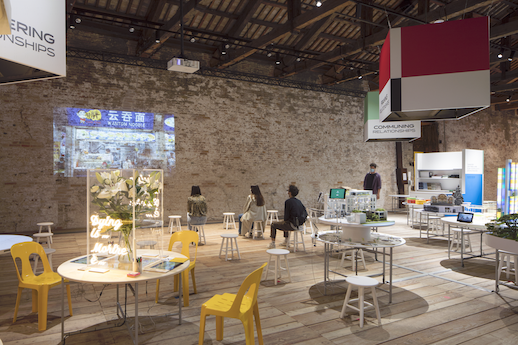
United Arab Emirates
Kenichi Teramoto and Wael Al Awar curated this year’s Gold Lion-winning UAE Pavilion (commissioned by the Salama bint Hamdan Al Nahyan Foundation). They attempted to create a technological equivalent of Portland cement. “The UAE has an image as a desert country, but in fact it has mineral-rich wetlands such as the sabkha salt flats,” Teramoto stated. With the assistance of researchers at the University of Tokyo, New York University Abu Dhabi, and American University of Sharjah, Teramoto and Wael developed a large-scale prototype structure created from an environmentally friendly cement made of recycled industrial waste brine. The new substance could reduce the climate impact of the construction industry and alleviate the need for Portland cement. After water, cement is the world’s second-most demanded resource.
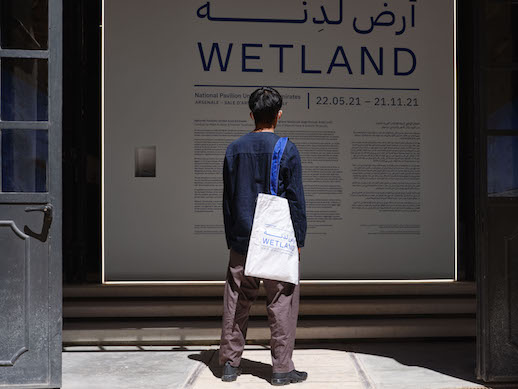
At the pavilion, Teramoto and Wael’s cement has been hand-cast into organic shapes recalling traditional coral-built houses. A structure built from 2,400 of these cement modules is exhibited in front of Farah Al Qasimi’s photographs of the Al Ruwais Sabkha salt flats, which are shown against a backdrop of voltage cables running to industrial facilities.
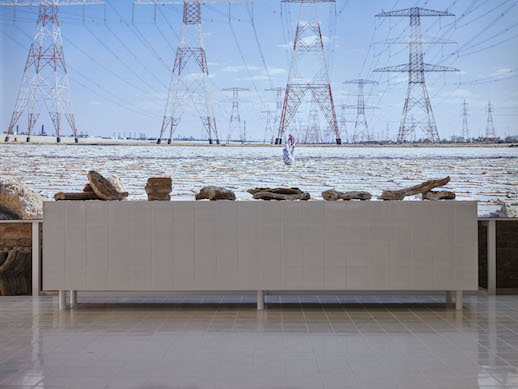
Kazuyo Sejima, president of this year’s Gold Lion jury, described Teramoto and Wael’s project as “a bold experiment that encourages us to think about the relationship between waste and production on a local and global scale, and opens us to new construction possibilities between craft and high-technology.”
A virtual tour gives a fuller look at the UAE exhibition.
